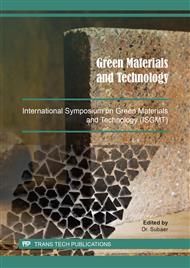p.155
p.161
p.171
p.179
p.189
p.195
p.205
p.214
p.221
A Contrastive Analysis of Wall Water Quality Test in Parepare City, Indonesia
Abstract:
Availability of raw water is one of the problems faced in the provision of clean water services in Indonesia. The purpose of this study was to determine differences in the quality of ordinary well water and drill water with physical parameters test. The number of samples in this study was 12 drill wells and 12 ordinary wells belonging to residents in the City of Parepare and the total were 12 villages. The parameters observed refer to the Indonesian Minister of Health Regulation Number 479 / Menkes / Per / IV / 2010 concerning Water Quality Requirements and Supervision which includes physical parameters such as turbidity. Data collection methods used in this study were cross sectional analysis in South Sulawesi Provincial Health Laboratory Makassar. Based on the results of the laboratory test for measuring water quality as measured by one of the physical parameters, namely turbidity, there is a difference in value between ordinary wells and boreholes. The turbidity values measured in ordinary wells are 3 villages that do not meet the requirements of clean water quality, where all of the results are above the maximum set level of> 5 NTU, the villages is watang Soreang village, Lompoe village and Galung Maloang village while the turbidity value is measured in drill wells are the result that meets the requirements of clean water quality where the results do not exceed the maximum set level of 5 NTU.
Info:
Periodical:
Pages:
189-194
Citation:
Online since:
August 2019
Keywords:
Price:
Сopyright:
© 2019 Trans Tech Publications Ltd. All Rights Reserved
Share:
Citation:


